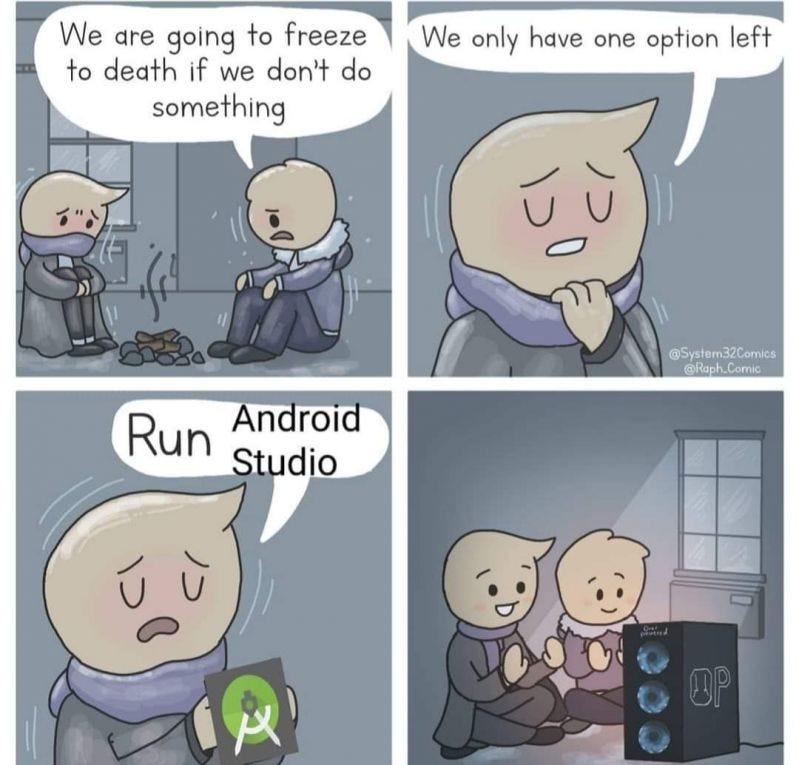

- Android emulator mac command line install#
- Android emulator mac command line update#
- Android emulator mac command line android#
- Android emulator mac command line code#
- Android emulator mac command line download#
Android emulator mac command line code#
Use the various APIs available, Capacitor or Cordova plugins, or custom native code to build out the rest of your app. If your app ran you are now ready to continue developing and building your app. If you encountered any issues while getting started, you can consult theĪndroid Troubleshooting Guide. Unless you’re debugging Java or Kotlin code, the run button is preferred.
Android emulator mac command line android#
In Android Studio, first select the device or emulator and then click the run or debug button to run your app. Kill all the existing adb servers and start over a new adb server. The command will prompt you to select a target. restart android emulator in command line on MacOS Raw restart android emulator in command line /bin/bash -ex NOTE: ANDROIDHOME must be configured as an environment variable. To run the project on a device or emulator, run: npx cap run android Physical devices should work as low as API 21 as long as their System WebView is updated.
Android emulator mac command line update#
The System WebView does not automatically update on emulators. To use an Android Emulator you must use an API 24+ system image. You can either run your app on the command-line or with Android Studio. To open the project in Android Studio, run: npx cap open androidĪlternatively, you can open Android Studio and import the android/ directory as an Android Studio project. npx cap add android Opening the Android Project
Android emulator mac command line install#
Adding the Android Platformįirst, install the package. Capacitor requires an Android WebView with Chrome version 60 or later. Android SupportĪPI 21+ (Android 5 or later) is supported, which represents Now, while still under the SDK Tools tab scroll down until you find the Google Play Licensing Library and check the box next to it.Capacitor features a native Android runtime that enables developers to communicate between JavaScript and Native Java or Kotlin code.Ĭapacitor Android apps are configured and managed through Android Studio. Expand the "Android SDK Build-Tools" entry if it’s not already open, and make sure 29.0.3 is selected. Now go to the “SDK Tools” tab and check the box next to “Show Package Details” here as well.
Android emulator mac command line download#
To develop Flutter apps for iOS, you need a Mac with Xcode 9.0 or newer: Install Xcode 9.0 or newer (via web download or the Mac App Store). The more you give it the faster it will process, but if you give it too much your computer may start lagging. We are GO flight iOS Setup Install Xcode.

assists you at runtime to interact with the Android emulator. You will be asked how much of your RAM resources you want to delegate to the Android emulator. Depending on the command-line options you provide to it, aapt wears a number of hats and. Your configuration may look different than mine depending on your computer specs. Performance (Intel ® HAXM) (See here for AMD)Ĭlick Next to get to the Emulator Settings:.Choose whatever you prefer, you can always change it later.Ĭlick next to get to the Install Type window.Ĭlick Next to get to the SDK Components Setup screen: Now it will ask you to pick a theme, light or dark. Which will take you to the Android Studio set up wizard:Ĭlick Next to get to the Select JDK Default Location window. Most likely you don’t, so choose Do not import settings and click OK If you have some existing Android Studio configurations you can now import them. We’re going to set up Android with Android Studio, which is the official IDE.ĭownload Android Studio from the official website.Īfter Android Studio is downloaded, drag it to your /Applications folder: On Android, you can choose between different 3rd party emulators, both paid and free. On iOS, you only have one option as far as emulators/simulators go (via Xcode). Brew cask install adoptopenjdk8 Install Android StudioĪndroid’s development environment is different from Apple’s.


 0 kommentar(er)
0 kommentar(er)
